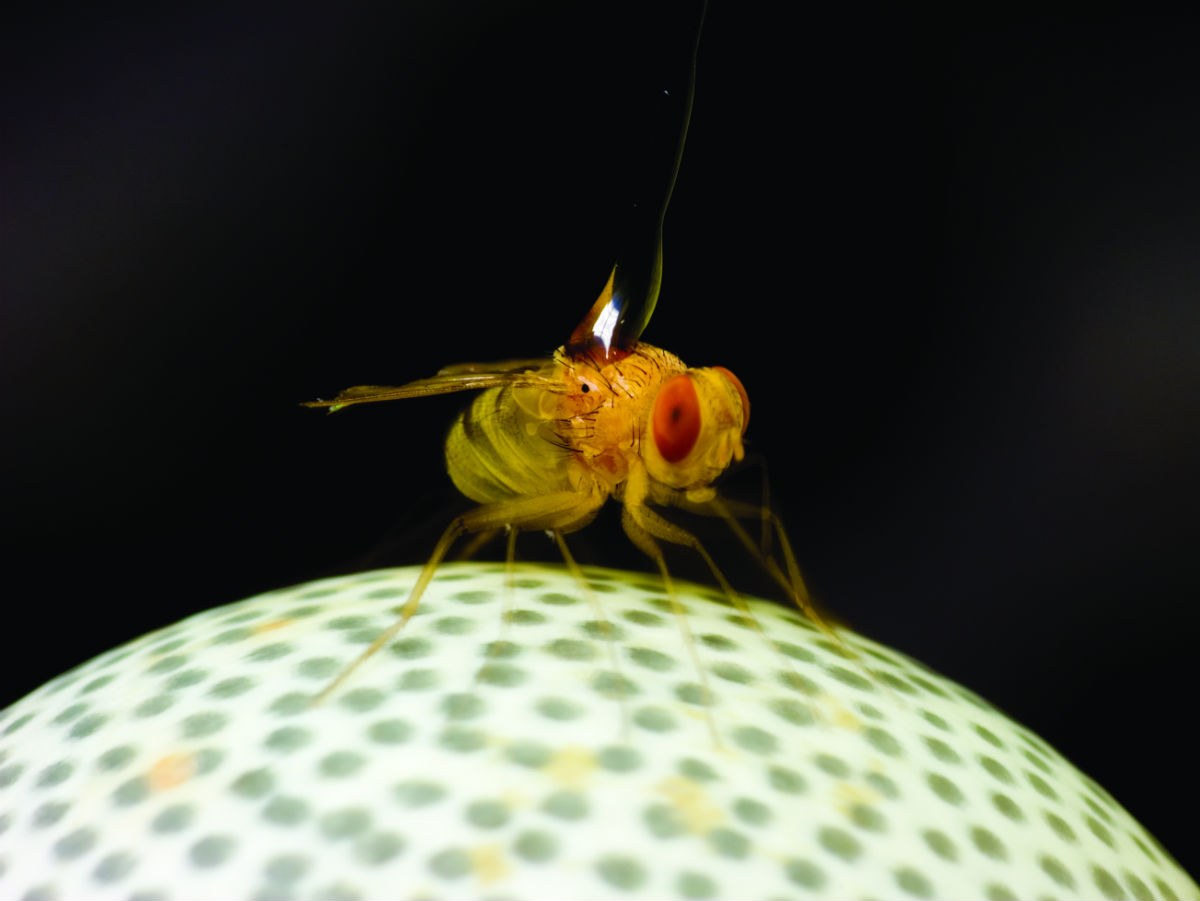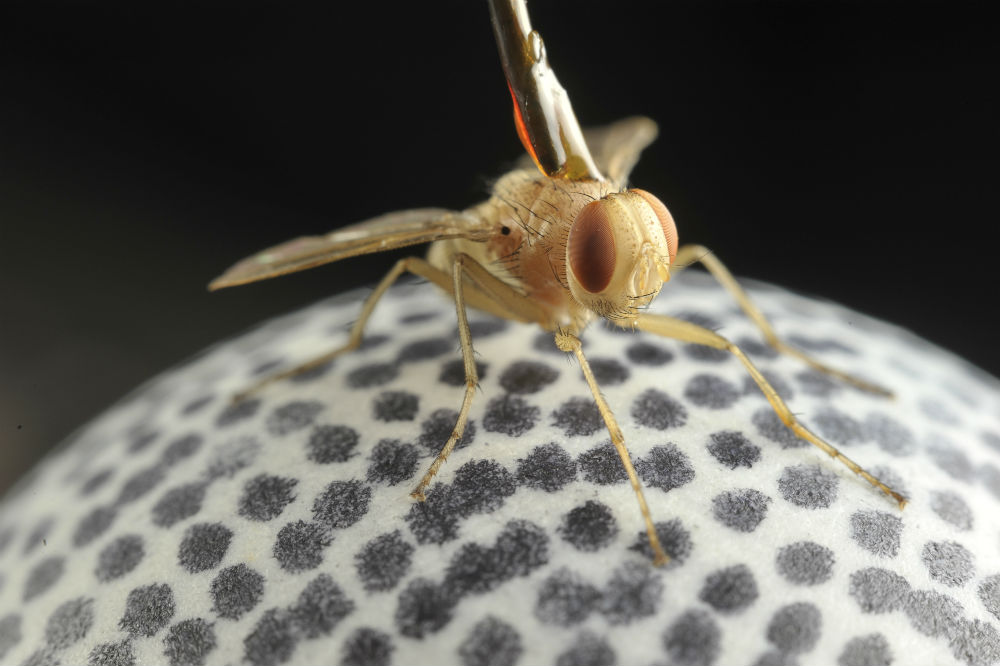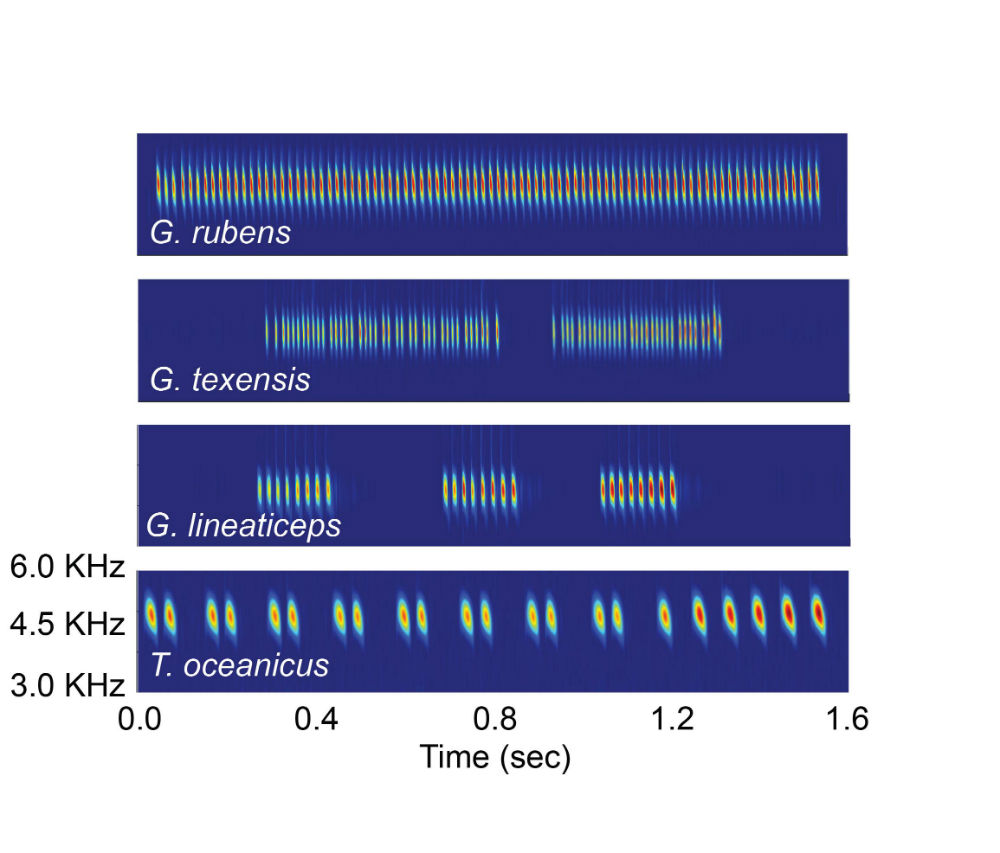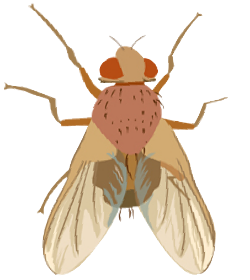
Research
How do flies recognize and localize sound sources?
Reproduction in the acoustic parasitoid fly Ormia ochracea depend on the ability of gravid female flies to recognize and localize the calling songs of suitable host crickets. O. ochracea possess a pair of mechanically-coupled ears for directional hearing. These ears function to amplify minute directional cues in the sound field (interaural time and intensity differences) to magnitudes that are suitable for neural processing and this has inspired the design of miniature microphones and directional hearing aids. While we know a great deal about the coding of sound direction in the auditory periphery, our understanding of how flies recognize appropriate cricket songs and how this information is combined with directional information in the central nervous system is lacking. This project seeks to elucidate how the auditory system integrates information for song recognition and sound direction to accurately localize suitable host crickets.


Looking at geographic differences in cricket song recognition.
Ormia ochracea occur in four geographically distinct regions in the United States. In each region, O. ochracea are behaviorally specialized to parasitize different host cricket species that produce cricket songs with different temporal patterns. We are interested in whether or not different populations of O. ochracea evaluate different temporal parameters (i.e. pulse duration, interpulse interval, or pulse rates), or do they simply prefer different magnitudes of the same temporal parameters? In this project, we are also interested in the neural circuits and excitatory-inhibitory interactions that may contribute to different temporal pattern preferences.


How female treefrogs solve the so-called cocktail party problem in noisy social environments?
During the breeding season, male treefrogs aggregate in large breeding choruses to advertise for receptive females. This collective acoustic display produces a considerable amount of background noise that can interfere with the ability of females to detect, discriminate, and assess individual males. Mating decisions depend on the auditory system to group together signal components (auditory grouping) that originate from an advertisement call, and to separate those call components from background noise. This work seeks to discover neurosensory solutions that contribute to call perception in noisy social environments. This work is done in collaboration with Dr. Mark A. Bee at the University of Minnesota.


 B
B